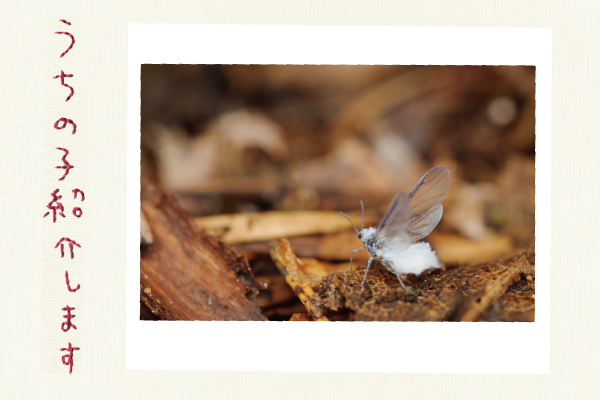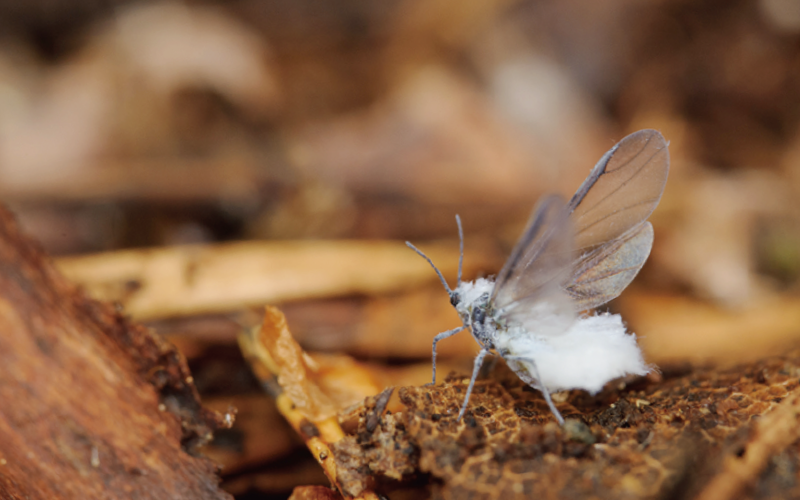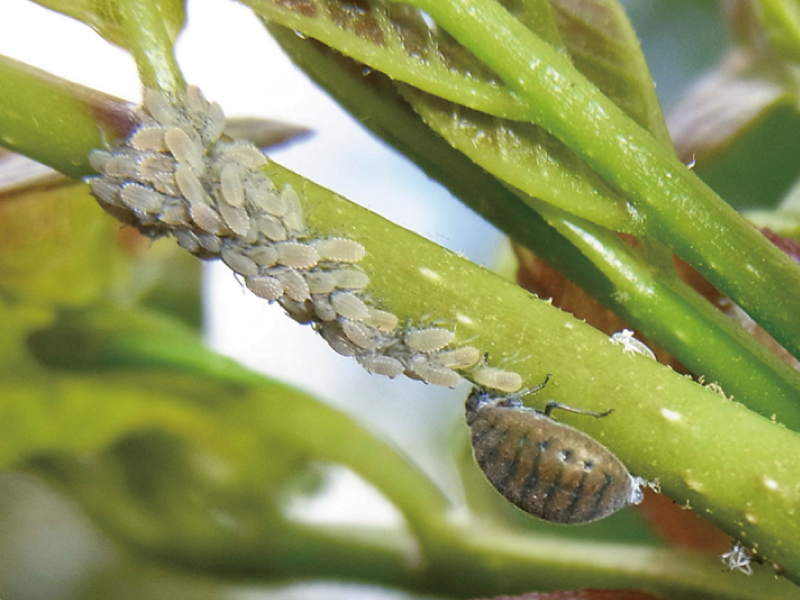- someone
- Information for Middle and High School Researchers
Introducing my child (54): Steller's sea gulls soaring through the air like snow
2021.05.03
Here we introduce the living creatures that are the subjects of our research. We will write about the interesting and fascinating aspects of these creatures, which we know because we deal with them every day.


It is a clear, calm, windless day in late autumn. They all take off at once toward the sky. They are Todono neowanowanowanowanowanowanowanowanowanowanowanowanowanowanowanowanowan. They have white hairs on their bodies, and the way many of them fly into the sky looks like snowflakes dancing in the air. They are commonly called "snow bugs" because of this appearance. The fibers that look like white down are actually made of wax secreted by glands on their bodies. These hairs protect their bodies from foreign enemies and moisture in the roots where they live for a long time, and also serve as parachutes when they drift in the sky.
Shinichi Akimoto of Hokkaido University, who studies snow bugs, says, "They reproduce monogenetically and produce clones identical to themselves, so every generation has the same DNA. Even so, they change their shape into various forms and go through a cycle of generations. That is the interesting thing about snow bugs," he says. The first generation was a large, round, wingless stem mother. This generation lives inside a tree called Yachidamo. The second generation is the monogenetic increase from the stem mother. Only a small number of survivors move from the Yachidamo to the base of the Abies sachalinensis around June. The "root generation" starts a new life at the base of the Abies sachalinensis and reproduces monogenetically. The "root generation" sucks nutrients from the roots and increases in number, spending a long period of time in the ground, changing generations six or seven times. They continue to multiply without wings, but as winter approaches, the ground begins to cool, which triggers the growth of wings. Then, on calm days when there is no wind, they fly away from the ground in unison, looking for the Yachidamo.
The more we learn about them, the more we are fascinated by their mysterious morphology and ecology. When they appear en masse in urban areas, they are sometimes treated as pests because they cling to clothing and bodies, but they are so lovable and full of wonder.
(Text by Yoshitaka Akiyama)
Interviewed by: Shinichi Akimoto, Faculty of Agriculture, Hokkaido University Photo by: Makoto Ishiguro
'Thesomeone vol.53From "The
